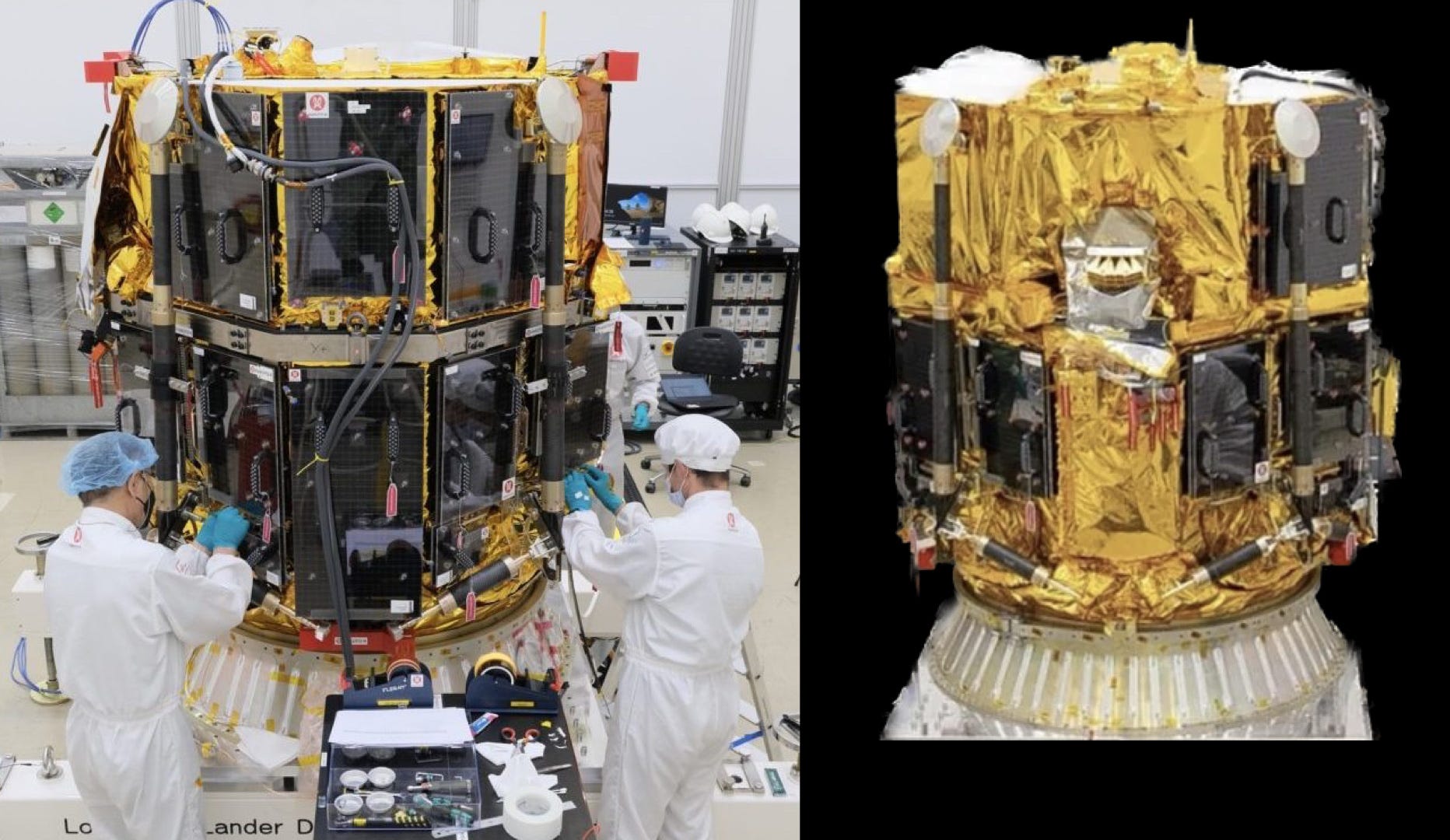Moon Monday #99: Two November launches, an instant origin scenario, prepping for future exploration, and more
ispace to launch for the Moon in November
ispace Japan has completed space environmental testing of its first lunar lander in Germany, and is now targeting launch in the November 9–15 timeframe on a SpaceX Falcon 9 rocket. Mission payloads include the UAE’s 10-kilogram Rashid rover (sporting two high-resolution cameras from the French space agency), a solid-state battery technology demonstration, a 250-gram tennis-ball-sized rover led by the Japanese space agency, 3 navigation-related payloads and services funded under the Canadian space agency’s LEAP initiative, and more. The lander will collect lunar soil samples and transfer its ownership to NASA as precedence for future resource use under the U.S.-led Artemis Accords.

If ispace successfully lands the spacecraft on the Moon, it will be the first private entity, and the fourth organization in the world, to achieve the feat. It’s impressive already that ispace has managed to raise money for the mission and bag truly varied international commercial customers, three of which involve national space agencies. While western coverage on commercial lunar landers has largely only highlighted NASA’s CLPS program and its vendors, ispace—which is also helping partner CLPS vendor Draper launch a farside mission—seems to have been underrated.
A wild new proposal of an instantly formed Luna
Scientists have proposed yet another addendum in an effort to solve the mystery of our Moon’s origin. While there’s a high consensus among scientists worldwide that the Moon likely coalesced from the debris of a collision between early Earth and a Mars-sized body 4.5 billion years ago, several specifics within remain questionable. One such sore thumb is the Moon having a practically identical bulk composition to Earth rather than a mix of its two parent planets.
Now scientists who recently simulated the Moon-forming collision in the highest resolution to date, meaning physics is emulated with higher fidelity, find it to be an accelerated process. They find that the Moon may have formed in hours, not months or years, and that its primary material source was Earth’s outer layers stripped by the impact. While other models have been proposed to get an Earth-like composition for the Moon, the authors say these struggle to explain several lunar properties such as the Moon’s current orbit.

Of course, we need to meticulously analyze pristine mantle and crust samples from diverse locations on the Moon to know if this proposal holds true. This is where NASA’s Artemis campaign is most close, as it’s expected to bring abundant lunar samples from some geologically diverse and pristine locations on the south pole.
Many thanks to Epsilon3 for sponsoring this week’s Moon Monday.
Thanks also to Mark Lucas for supporting my independent writing.
NASA funds lunar communications studies
NASA is funding KSAT USA and SpaceLink to conduct studies on how they can enhance and plan communications for future lunar missions as part of the agency’s Near Space Network. This includes bettering traditional direct-to-Earth communications, developing lunar orbital relays, and offering communications and navigation services much like what ESA is already progressing towards with its Moonlight initiative.
Relatedly, KSAT USA’s namesake parent company in Norway was part of one of the two consortia selected by ESA to determine Moonlight’s feasibility. KSAT, whose several grounds stations are already part of the Near Space Network, is also establishing a dedicated ground network to (commercially) serve communications needs of the increasing number of Moon missions. Notably, the company has a commercial agreement with Intuitive Machines to provide communications for the latter’s first, second, third and all future lunar missions, most of which are part of NASA’s CLPS program.

More Moon
NASA will target launching the SLS rocket on November 14 for its long-awaited Artemis I mission to send an uncrewed Orion spacecraft around the Moon and back. The 69-minute launch window opens at 12:07AM EST (5:07AM UTC). Following ongoing maintenance and repairs to the rocket’s thermal protection system, and recharging or replacing several batteries, the agency plans to roll the SLS to the launchpad as early as November 4.
Dennis Tito and his wife Akiko Tito have purchased 2 out of 12 seats on the second circumlunar mission of SpaceX Starship, with the first one being Yusaku Maezawa’s “dearMoon” targeting a 2023 launch. This gives SpaceX potentially two opportunities to fly humans around the Moon before NASA launches crew on a similar mission with Artemis II no earlier than late 2024. This isn’t a competition but the optics of it to that end cannot be ignored.
In September 2022, ESA began training the next two astronauts—ESA’s Alexander Gerst and NASA’s Stephanie Wilson—as part of its Pangaea campaign to coach future lunar astronauts in geology, a highly valuable skill in exploring the Moon and collecting samples. The last Pangaea batch saw European astronaut Andreas Mogensen, European engineer Robin Eccleston and NASA astronaut Kathleen Rubins explore various Moon-like geological sites across Europe.
ESA is funding the LEAP mission concept to explore some of the most challenging terrains on the Moon, starting with the geologically rich Aristarchus, a highly desired landing region by scientists that’s also difficult to access. The LEAP team aims to launch a versatile four-legged robot on ESA’s upcoming European Large Logistic Lander by end of decade or early next which can hop its way out of challenging areas, with terrestrial prototype testing in lunar-like testbeds ongoing.
Fun fact: NASA’s Surveyor 6 spacecraft, which landed on the Moon in 1967, was the first planetary hopper, having jumped post-landing to relocate. The second hoppers were Apollo astronauts. The next lunar hop could be by Intuitive Machines’ NASA-funded Micro-Nova robot during the company’s second mission in 2023 as part of NASA’s CLPS program.
NASA’s recent spectacular DART asteroid impact reminds me of when the agency also intentionally smashed Apollo lunar ascent modules on the Moon post-mission for seismic science.
→ Browse the Blog | About | Donate ♡
